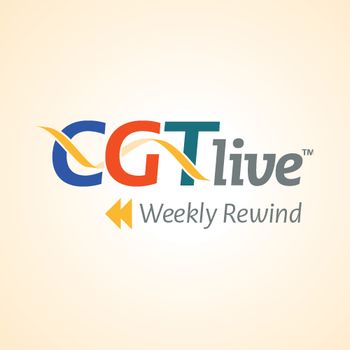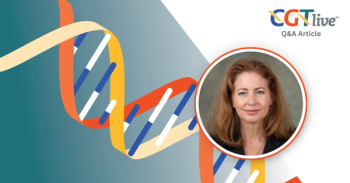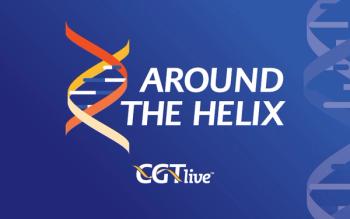
X-Linked Retinoschisis Gene Therapy Trial Doses First Patient
ATSN-201 utilizes Atsena’s novel spreading capsid AAV.SPR, which is expected to spread laterally and allow transduction of the gene therapy in the central retina.
The first patient has been dosed in the phase 1/2 LIGHTHOUSE clinical trial (NCT05878860) evaluating Atsena Therapeutics’ ATSN-201, an investigational adeno-associated virus (AAV) gene therapy, for the treatment of X-linked retinoschisis (XLRS) associated with mutations in the RS1 gene.1
ATSN-201, which is injected intravitreally and delivers functional RS1, utilizes Atsena’s novel spreading capsid AAV.SPR, which is expected to spread laterally and allow transduction of the gene therapy in the central retina despite an injection site outside the macula. The central retina, the main area for disease activity in XLRS, would otherwise need to be reached with risky detachment of the fovea through surgery. Atsena noted that in preclinical research in nonnhuman primates, AAV.SPR effected transgene expression well outside the subretinal injection bleb margins, setting it apart from what is seen with benchmark vector AAV5.
“Dosing the first patient in the LIGHTHOUSE study marks a significant milestone for Atsena and the XLRS community,” Kenji Fujita, MD, the chief medical officer of Atsena Therapeutics, said in a statement.1 “We are excited to be utilizing AAV.SPR in the clinic, as it has the potential to revolutionize the treatment of XLRS, as well as other inherited retinal disorders. Spreading laterally beyond the subretinal injection site, AAV.SPR facilitates the safe delivery of RS1 to photoreceptors in the central retina/fovea. We look forward to advancing the LIGHTHOUSE study and the continued development of our novel gene therapies to reverse or prevent blindness.”
LIGHTHOUSE was initiated on August 22, 2023, following the FDA’s
“Considering the lack of available therapies for XXLRS, this is very exciting news for the inherited retinal disease community,” Mark Pennesi, MD, PhD, a professor in ophthalmology and chief of the Paul H. Casey Ophthalmic Genetics Division Molecular and Medical Genetics in the School of Medicine at Oregon Health & Science University, added to the statement.1 “While attempts to deliver gene therapy through intravitreal routes faced challenges, subretinal treatment utilizing spreading AAV vectors has the potential to be the breakthrough we need to achieve efficacy.”
Atsena Therapeutics is also developing ATSN-101, an investigational gene therapy currently being evaluated in a phase 1/2 clinical trial (NCT03920007) for the treatment of GUCY2D-associated Leber congenital amaurosis (LCA1).
“In addition to FST, we also measured an endpoint for functional vision called MLMT,” Fujita told CGTLive. “This is a full room physical maze that patients run under 7 different light conditions, and it's the same end point that was used for the approval of Luxturna. And we measured this in some of our high dose patients and we found a very nice correlation with our improvements in FST. And in the majority of the patients, we saw a 2 or greater step improvement in MLMT, which is the threshold considered to be clinically meaningful.”
REFERENCES
1. Atsena Therapeutics announces first patient dosed in phase I/II clinical trial of ATSN-201 for the treatment of X-linked retinoschisis. News release. Atsena Therapeutics. August 28, 2023. Accessed August 29, 2023. https://atsenatx.com/press-release/atsena-therapeutics-announces-first-patient-dosed-in-phase-i-ii-clinical-trial-of-atsn-201-for-the-treatment-of-x-linked-retinoschisis/
2. Atsena Therapeutics receives FDA clearance of IND application for ATSN-201, an investigational gene therapy for the treatment of X-linked Retinoschisis. News release. Atsena Therapeutics. May 1, 2023. Accessed August 29, 2023. https://atsenatx.com/press-release/atsena-therapeutics-receives-fda-clearance-of-ind-application-for-atsn-201-an-investigational-gene-therapy-for-the-treatment-of-x-linked-retinoschisis/
3. Kay CN, Yang P, Cideciyan AV, et al. Six-month safety and efficacy of ATSN-101 in patients with Leber congenital amaurosis caused by biallelic mutations in GUCY2D (LCA1). Presented at: ARVO 2023 Annual Meeting; April 23-27; New Orleans, Louisiana. Abstract 1914
Newsletter
Stay at the forefront of cutting-edge science with CGT—your direct line to expert insights, breakthrough data, and real-time coverage of the latest advancements in cell and gene therapy.

















































